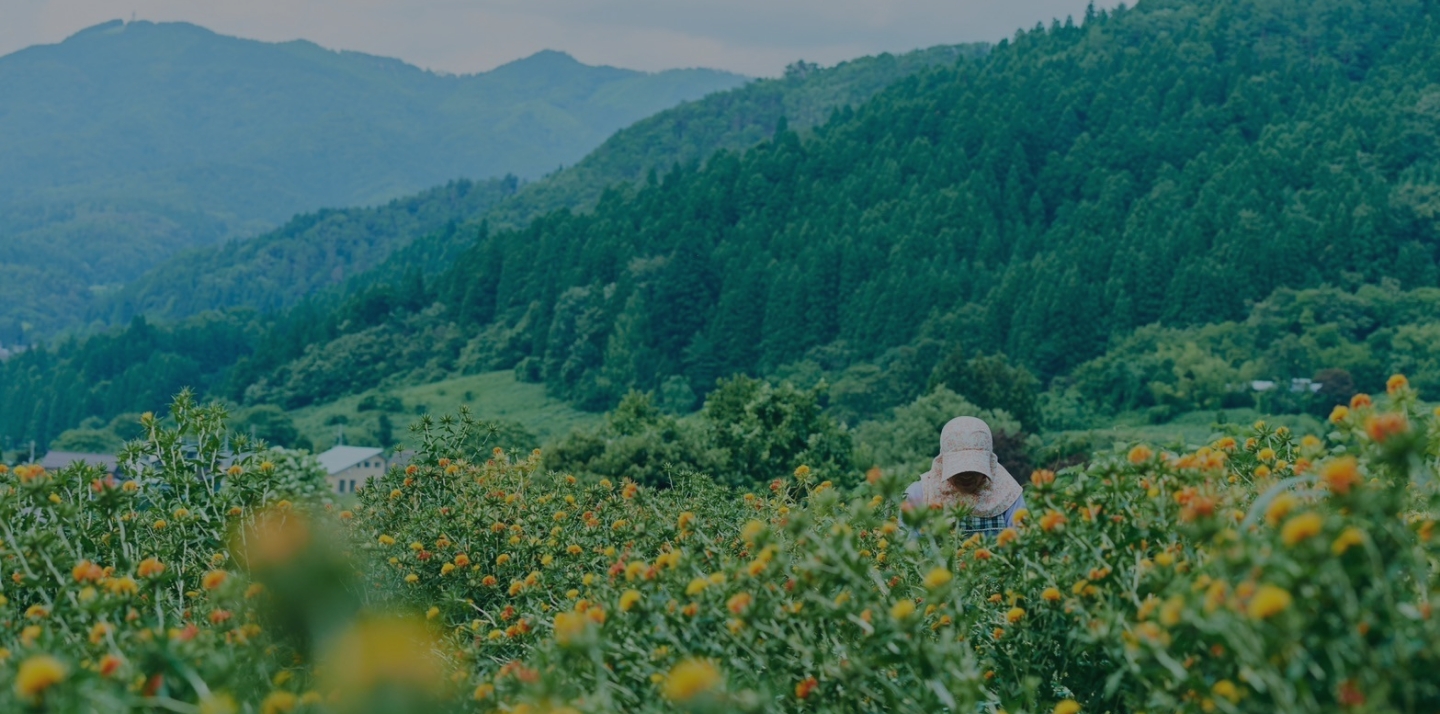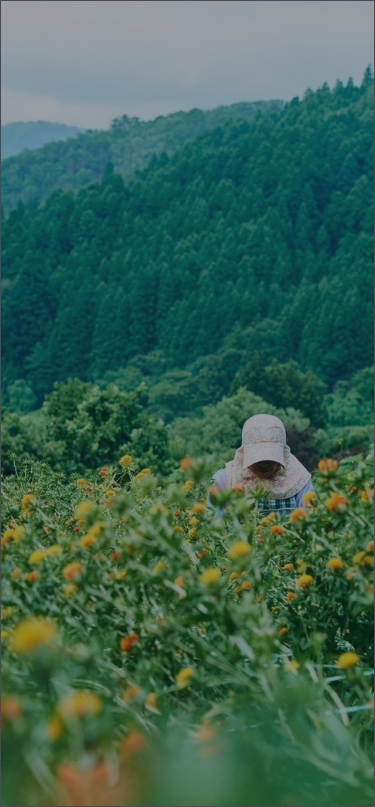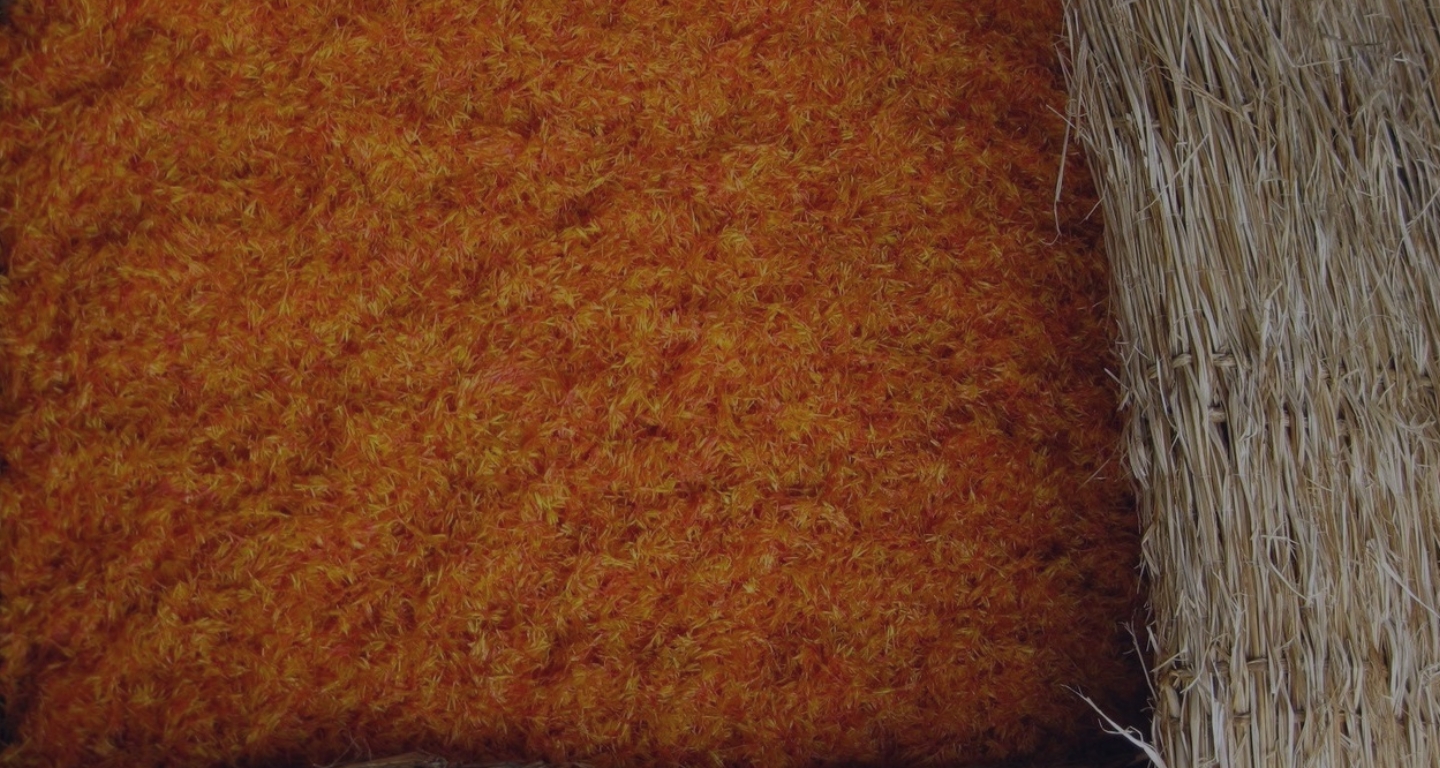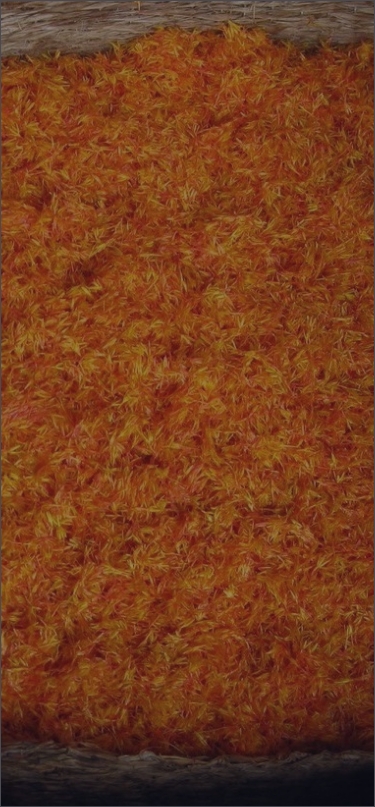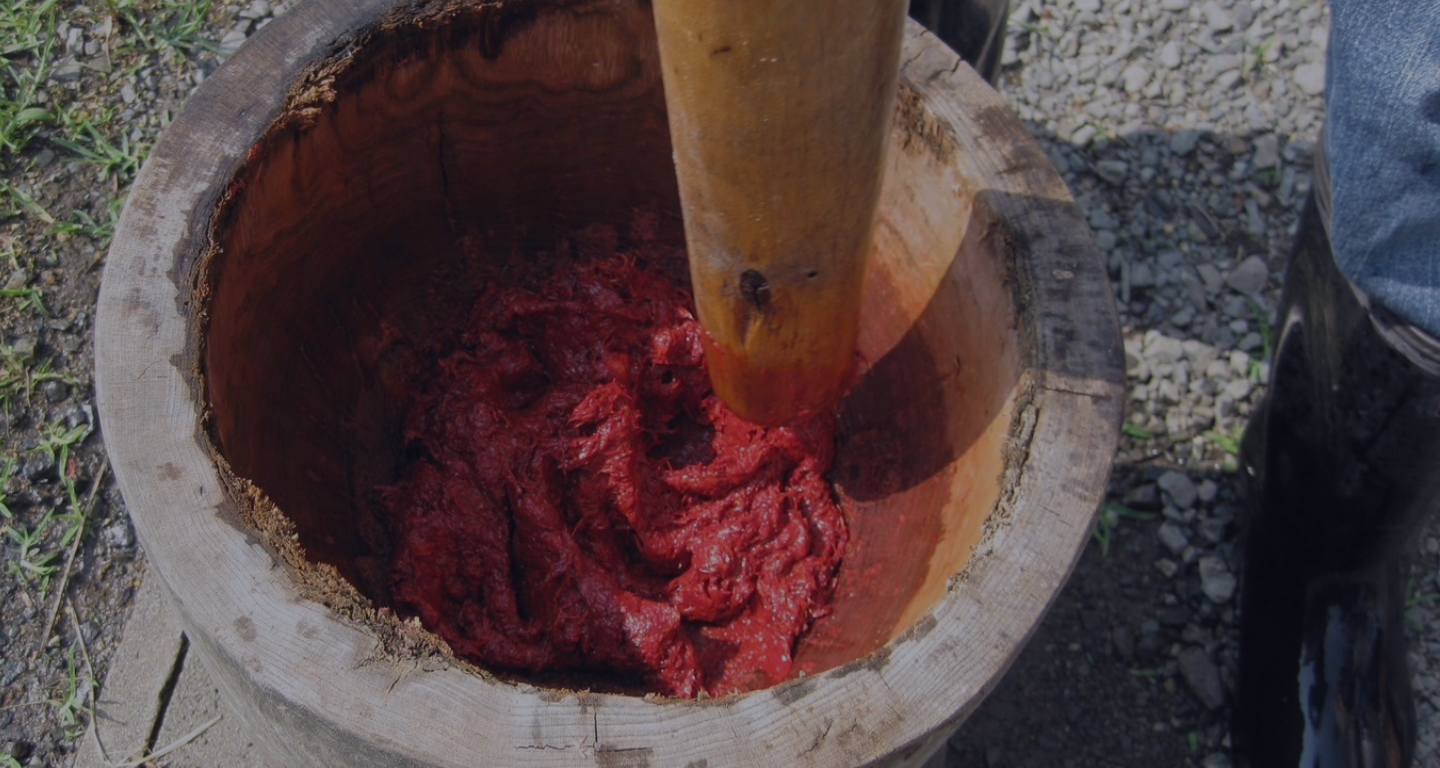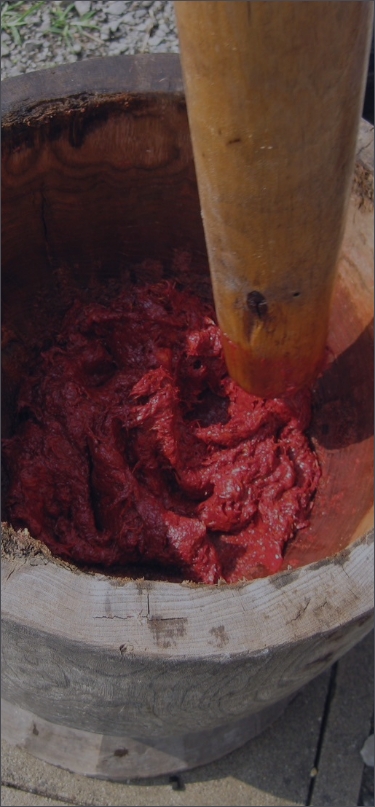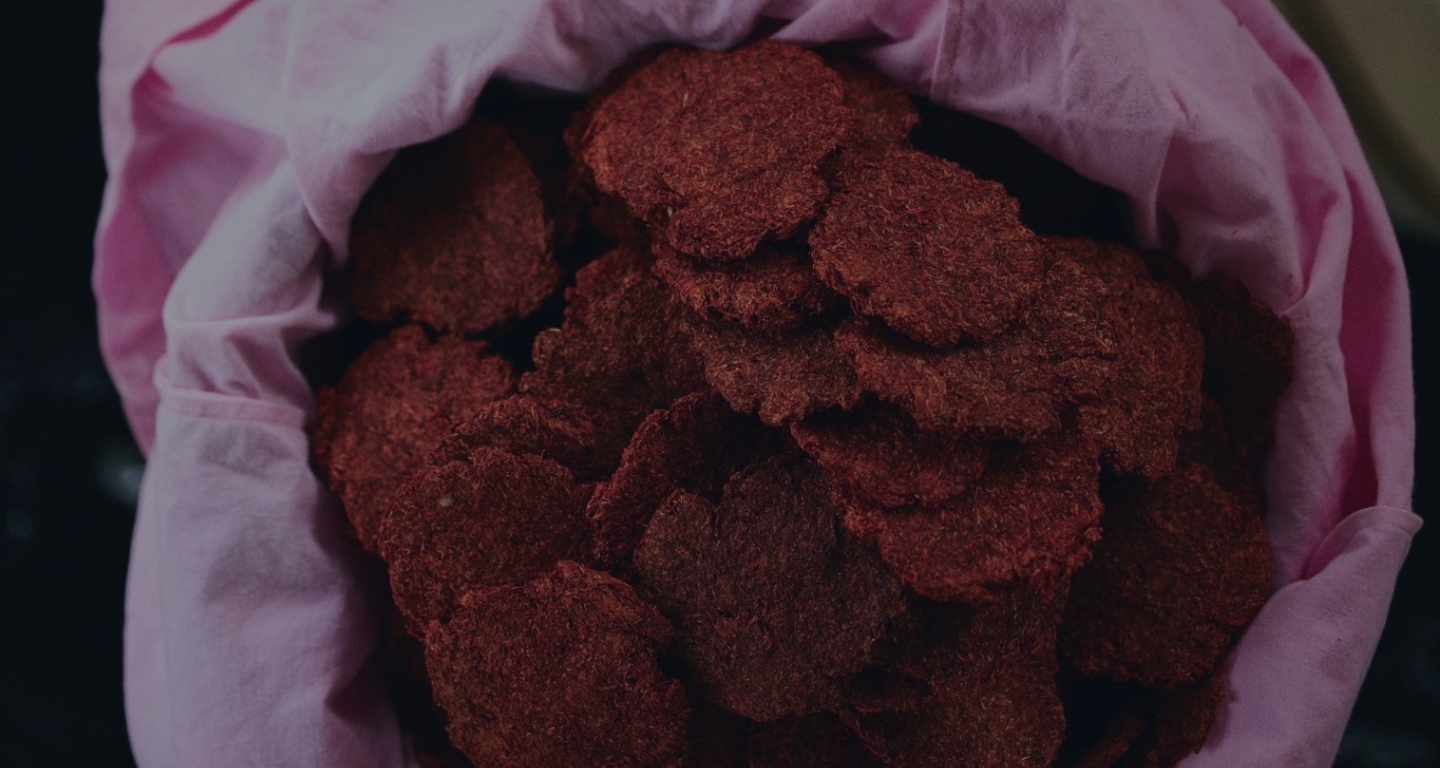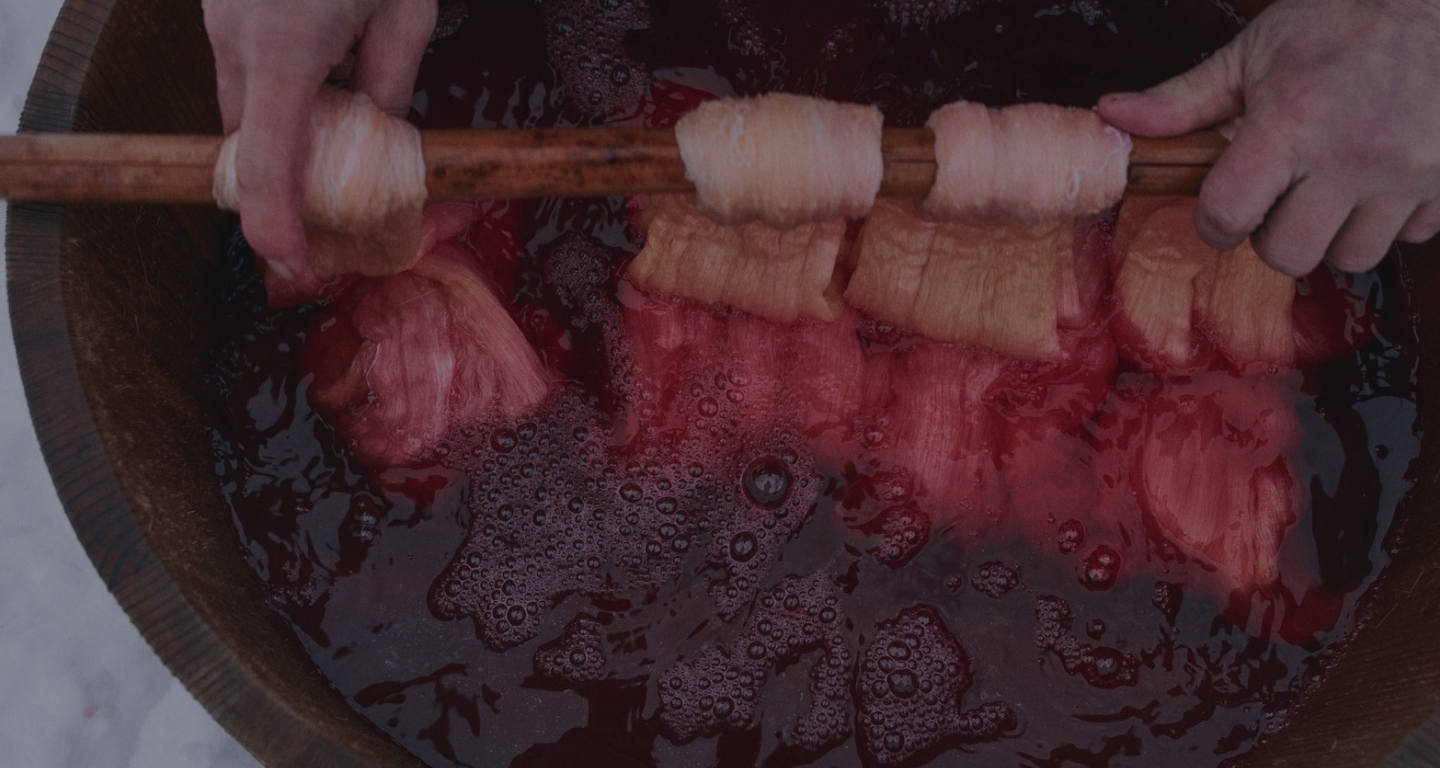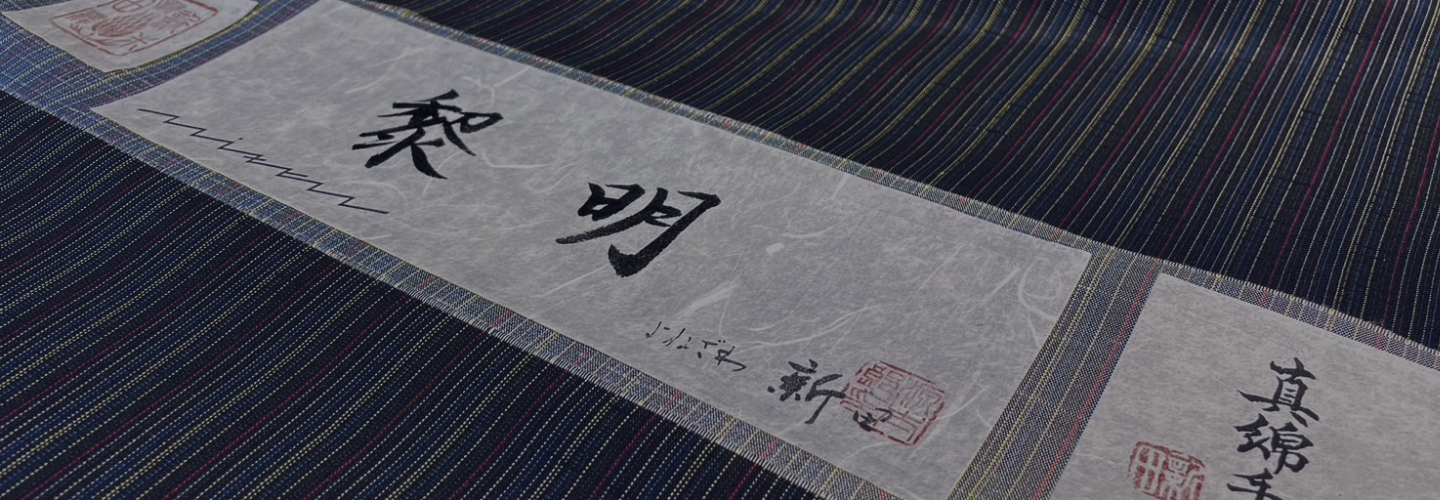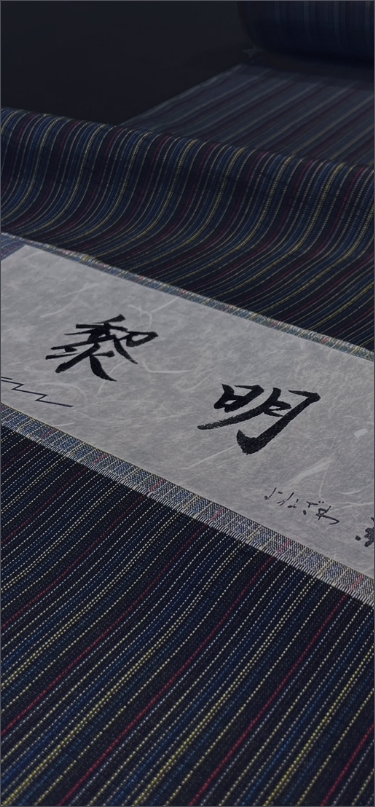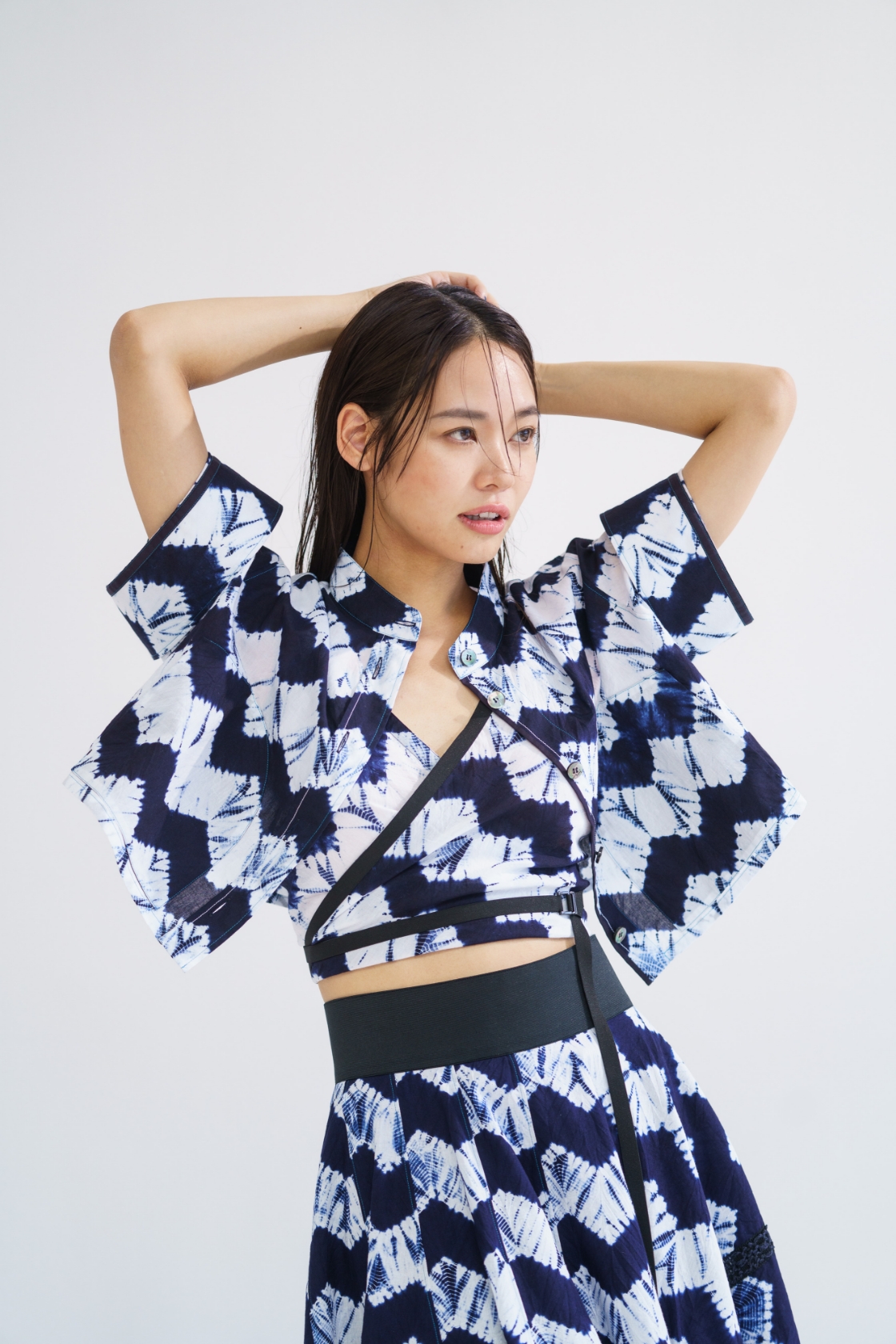YONEZAWA ORI
YAMAGATA PREF.
"YONEZAWA ORI" <YAMAGATA PREF.>
Located at the southernmost tip of Yamagata Prefecture, at the headwaters of the Mogami River,
Yonezawa is a region with a history of over 250 years as a textile production area,
with a variety of unique characteristics.
One such feature is the use of safflower, the prefectural flower of Yamagata,
in yarn-dyed textiles.
Yonezawa Nitta, established in 1884, revived safflower dyeing and introduced safflower tsumugi
under the third generation of owners in 1963.
Today, under the fifth generation of ownership, the company cultivates safflowers and performs all processes from dyeing to weaving in-house.
The color of safflower tsumugi is characterized by a soft spectrum of a hundred shades,
enriched by the blessings of nature.

Safflower Tsumugi
In the snowy Yamagata region, safflower farmers begin sowing in April,
when the snow melts and sunny days arrive.
The seeds thrive, and around Hange-shō (11 days after the summer solstice), a mystical scene unfolds
in the lush fields, with solitary yellow flowers blooming - a phenomenon known as "Hange hitotsuzaki".
Every morning, as the dew settles, farmers carefully pick each flower, mindful of its thorns.
Flower Resting
The yellow-flowered safflower is harvested carefully, one flower at a time,
to ensure that each flower is picked at the right time.
If it is missed, the flower will turn from yellow to red, making it unsuitable to use as a dye.
After harvesting, the process of turning the safflower into a dye begins.
The yellow flowers are washed in water, a process known as "yellow water washing,"
in which cuts are made in the petals to promote oxidation and fermentation.
By placing them in the shade and providing adequate moisture for about three days,
the yellow flowers turn red, as shown in the photograph.
Pounding
The red fermented safflower is pounded with a pestle.
The process is carried out with care, judging by the stickiness and unique aroma
that vary with temperature and humidity.
Safflower Senbei
The ground safflower is formed into balls and flattened into a senbei (rice cracker) shape, and then dried.
This product, known as safflower senbei, becomes the dye.
Safflowers are annual plants in the aster family and are difficult to grow in succession.
They are believed to have originated in countries such as Egypt and were
brought to Japan via the Silk Road. In the mid-Edo period (around the 18th century),
over 60% of the nation's safflower production was in Yamagata.
Safflower was very valuable, considered equal to or even more precious than gold.
Dyeing
Safflower contains both yellow and red pigments.
The extraction and dyeing process is quite different from other plant dyes.
Typically, pigments are extracted by boiling, but with safflowers,
only the yellow pigment is first dissolved in water.
The red pigment is then extracted by soaking in an alkaline solution.
During red dyeing, acidic liquids such as rice vinegar are added to the solution to neutralize it,
and the fabric is repeatedly dyed over time to deepen the color.
By layering other colors, it is also possible to create a deeper, more nuanced expression.
Thus, the dyeing process is carried out with great care and time through years of experience.


